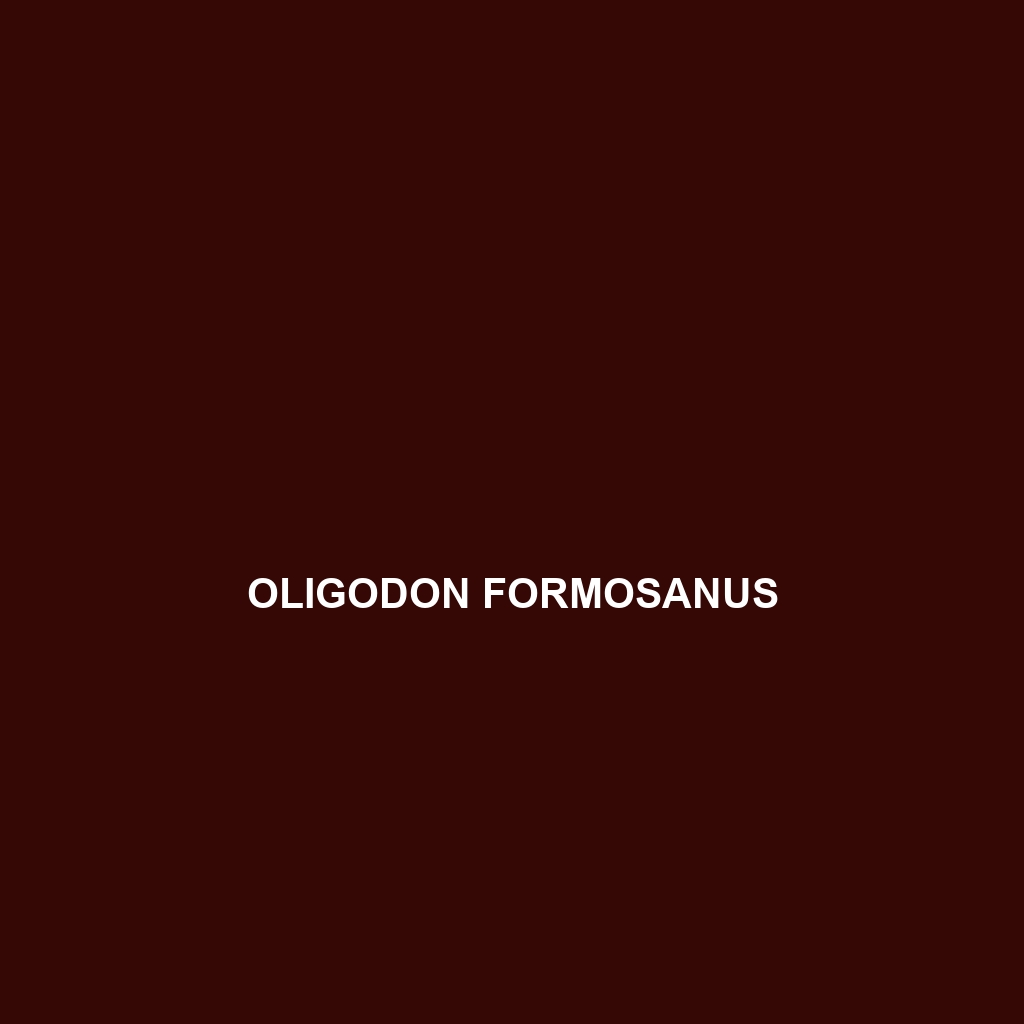Common Name
Oligodon formosanus
Scientific Name
Oligodon formosanus
Habitat
Oligodon formosanus, commonly known as the Formosan rat snake, is primarily found in the subtropical and tropical regions of Taiwan. This species thrives in various habitats including lush rainforests, temperate forests, and sometimes in agricultural landscapes. The ideal climates are typically characterized by high humidity and moderate temperatures, enabling a rich biodiversity in flora and fauna. The presence of abundant underbrush and cover is essential for the Formosan rat snake, providing shelter and hunting grounds while allowing it to blend seamlessly into its environment.
Physical Characteristics
The Oligodon formosanus is a moderately sized snake, usually reaching lengths of 60 to 120 centimeters. Its slender and elongated body features smooth, glossy scales which contribute to its remarkable camouflage. The coloration of the Formosan rat snake ranges from brown to gray, often exhibiting intricate patterns that may include darker mottling along its back. Notable features include its distinctively pointed snout and large, expressive eyes, which aid in its hunting activities. The uniqueness of its coloration and morphology distinguishes Oligodon formosanus from various other snake species found in its geographic range.
Behavior
Oligodon formosanus exhibits predominantly nocturnal behavior, becoming active during the cooler hours of the night to hunt and forage. This snake is mostly terrestrial but can often be observed climbing trees or shrubs, especially when searching for prey or seeking refuge. During mating seasons, which typically occur in spring, males may engage in elaborate courtship displays characterized by body posturing and pheromone signaling. These behaviors not only demonstrate their physical prowess but also play a crucial role in territory establishment and mate attraction.
Diet
Reproduction
The reproductive cycle of Oligodon formosanus begins with mating during the spring months, coinciding with a rise in temperature and availability of food resources. The females lay clutches of 5 to 15 eggs in moist, concealed locations to protect them from predators. The incubation period typically lasts from 45 to 70 days, depending on temperature conditions. Upon hatching, the juvenile snakes measure about 20 centimeters and are left to fend for themselves from day one. Parental care is absent, and survival rates for hatchlings can be low due to predation.
Conservation Status
Currently, Oligodon formosanus is listed as of “Least Concern” on the IUCN Red List, indicating a stable population trend. However, habitat destruction due to urban development and agricultural expansion poses a significant threat to its natural habitat. Conservation efforts are aimed at preserving the ecosystems in which they thrive, including the establishment of protected areas and wildlife corridors. Education and awareness programs are also crucial in rallying support for the preservation of this unique species.
Interesting Facts
One of the most fascinating aspects of Oligodon formosanus is its ability to change color slightly based on its environment, enhancing its camouflage. Additionally, this snake emits a mild musk as a defensive mechanism when threatened, deterring potential predators. Its role in controlling rodent populations makes it a beneficial species in agricultural and suburban regions, highlighting its significance beyond its ecological niche.
Role in Ecosystem
The ecological role of Oligodon formosanus as a predator is vital in maintaining the balance of local ecosystems. This species helps control rodent populations, which, if left unchecked, can lead to significant agricultural damage and the spread of disease. Moreover, as part of the food web, Formosan rat snakes are preyed upon by larger predators such as birds of prey and larger mammals, illustrating their position within the ecological framework. Their presence aids in the overall health of the ecosystem, contributing to biodiversity and stability.
This description incorporates various SEO-friendly keywords while maintaining a detailed and informative structure suitable for a broad audience.
